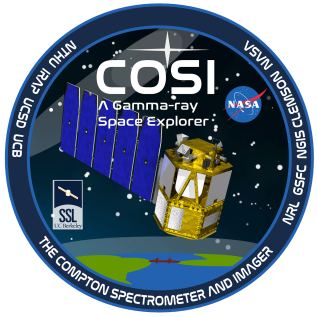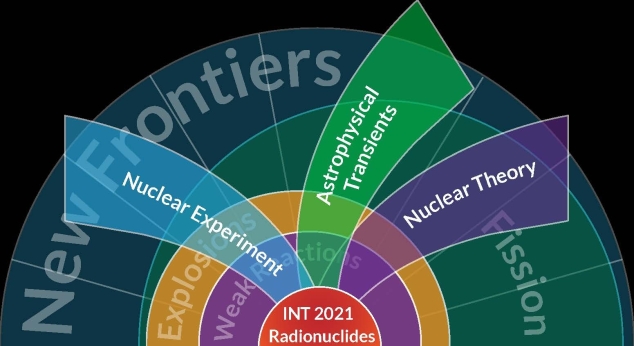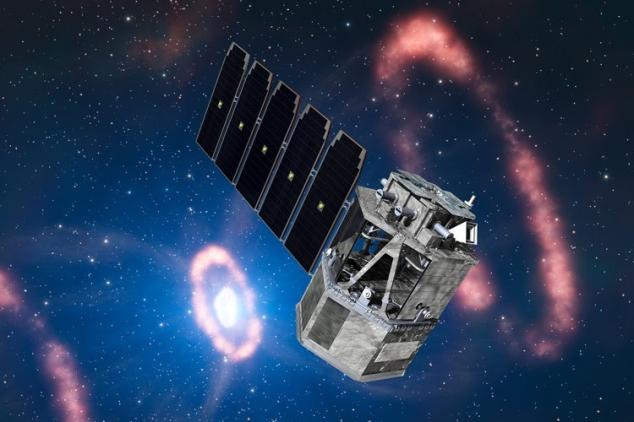INT 21-3 Highlights Report
Radionuclides: Nuclear Physics, Astrophysical Models, and Observations
October 4 - 22, 2021
C. Fryer, A. Spyrou, R. Surman, F. Timmes

We are entering an era where the physics of astrophysical transients ties together new advances in nuclear physics (both theory and experiment) and next-generation, high-energy astrophysics experiments. Rapid advances in this multi-disciplinary field have been inspired by new discoveries (e.g. merging neutron stars, r-process origin sites, gravitational waves, 3D imaging of young supernova remnants) that have led to an increased understanding of a wide range of relevant fields: stellar evolution, engines behind astrophysical transients, gamma-ray astronomy, dense nuclear matter, neutrino physics, and nuclear masses, cross-sections, and reaction rates. MeV gamma rays provide a unique probe of nuclear processes in astronomy, directly measuring radioactive decay, nuclear de-excitation, and positron annihilation. This program brought together astronomers, astrophysical modelers, nuclear theorists, and nuclear experimentalists to fully explore the potential of next generation of gamma ray observatories, including building explicit links to the experimental programs at radioactive beam facilities such as the upcoming Facility for Rare Isotope Beams.
This meeting focused on the cross-disciplinary aspect of this research and every week included talks including nuclear theory and experiment, astrophysical modeling, and current and proposed NASA missions. We discussed the broad range of nuclear physics uncertainties and current and upcoming experiments that will be used to constrain these uncertainties. We discussed the latest advances in stellar and supernova models, including state-of-the-art 3-dimensional models following core collapse from the final stellar burning stages through to the breakout of the asymmetric supernova blastwave from its progenitor star. These models provide a much more detailed understanding of these explosions to better calculate the nucleosynthetic yields. We also discussed the uncertainties in comparing these yields to astrophysical data including dust, galactic chemical evolution and gamma-ray signals. Finally, we reviewed NASA results and gamma-ray missions that will be proposed in the upcoming medium explorer call this December. During this workshop, NASA selected COSI, a gamma-ray satellite that will detect the decay lines from radioactive nuclei.

Image by Frank Timmes |

Image by Jim Willis, courtesy of Northrop Grumman Corporation ½ Space Systems;background image courtesy of European Southern Observatory
|
